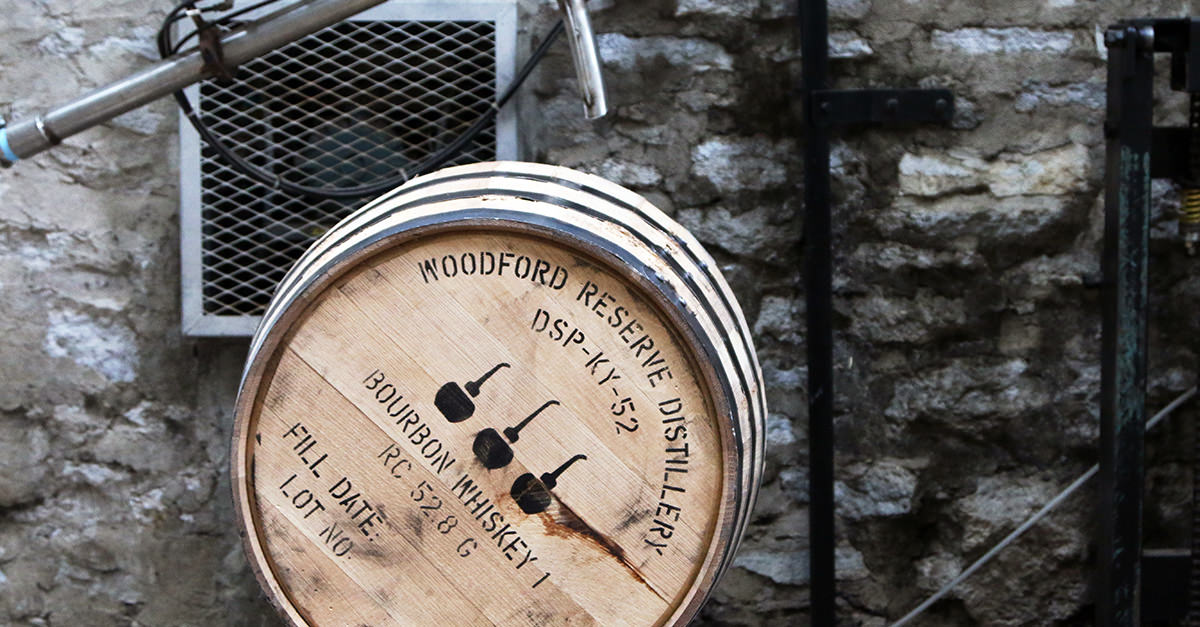Bourbon Essential Info
- Color: Light to rich amber
- Region: Though it’s associated with Kentucky, bourbon can technically be made anywhere
- ABV: At least 40% ABV, Cask Strength can be significantly higher
- Aged: No requirements, but almost always aged, and always in charred new oak barrels
- Made from: At least 51% corn, the rest typically rye and barley (also possibly wheat)
- Commercial Examples: Bulleit, Maker’s Mark, Buffalo Trace, Four Roses, Jim Beam, Knob Creek, Woodford Reserve
- Popular Cocktails: The Old Fashioned, Mint Julep, Boulevardier, Improved Whiskey Cocktail, Whiskey Sour, The Derby
Ah, America’s whiskey. The beautiful end result of advances in distillation, corn cultivation, and some much-needed federal regulation. But what exactly makes the special stuff so special? Short answer: corn, charred new oak, and time. (Contrary to popular belief, being made in Kentucky is optional.) Bourbon must be made with at least 51% corn in the mash (with rye and barley typically filling out the remainder), distilled to no more than 160 proof (allowing for more flavoring congeners to remain in the distillate), barreled at 125 proof, and bottled at minimum 40% ABV. Because it’s made with a large proportion of corn, the spirit has an impression of sweetness, but the flavor profile has many influences: whatever makes up the rest of the grain bill, the strong influence of charred new oak, even the climate of the “rackhouse” (or rickhouse, the special storage facility where barrels of bourbon are—lovingly—piled high to the sky and rotated as they age and climate changes).
Like Scotch, bourbon has some specific terminology to navigate, but let that intrigue (rather than scare) you. See, bourbon doesn’t technically have any aging minimums—bourbon that touched charred new oak for 45 minutes could be sold legally. Thankfully, much bourbon is aged much longer than that. “Straight Bourbon” is basically legally compliant bourbon that’s also been aged for 2 years (if it’s aged less than 4 years, it has to have an age statement on the bottle, so a straight bourbon with no age statement is at least 4 years old). Bourbon labeled “Bottled In Bond” (there aren’t many of them) comply with the 1897 Bottled in Bond Act—basically the U.S. government’s way of guaranteeing purity at a time when practices were less than scrupulous, requiring the bourbon to be the product of one distillery and one distilling season, aged in U.S.-supervised warehouses for at least 4 years.
Other terminology refers to how many barrels were used in the blending of bourbon. “Small Batch” isn’t a legal term, and was actually introduced by bourbon big boy Jim Beam, but generally refers to bourbons blended from a “special” selection of barrels, intentionally blended for control and consistency. “Single Barrel” bourbons, on the other hand, come from just one barrel, expressing the idiosyncrasies of that bourbon’s aging cycle rather than the skill of the distiller and blender (you don’t see many single barrel Scotches, but they’re out there, too).
Clearly, aging, barreling, and blending will all impact the flavor profile, but bourbons generally share a sweeter, smooth undertone with varying notes of spice, caramel, vanilla, and some degree of corn sweetness. (Myriad other flavors, from tobacco and toffee to tannin, fruit, leather, etc., can show up.) “High Rye” bourbons will have more pronounced spice, “High Corn” (e.g. 60 or 70% corn in the mash bill) will be sweeter, and so-called “Wheaters” (where wheat replaces rye in the typical corn-rye-barley bourbon mash bill) are softer, and a bit sweeter. “Cask Strength” bourbons aren’t cut down to 40% ABV, so they’re both more potently alcoholic and flavorful. Not a great starter bourbon, but one to aspire to. And then of course there’s the common term “Sour Mash” (which can be used on Tennessee Whiskey* as well). If you’ve made bread before, you’ll get it (even if not): sour mash is simply bourbon that’s had some of the mash from the previous batch added to the new mash, kind of the way you’d add part of a sour dough into your new dough, for consistency of yeast and flavor (except with bourbon, only the mash is sour, the resulting spirit is not). “Sweet Mash” uses entirely new yeast, resulting in different flavors.
As you get into it, you’ll notice bourbon’s a bit fussed over—with some distilleries specifying the use of water filtered by the limestone shelf in Bourbon county, even Buffalo Trace’s Single Oak Project (with actual, individual trees specially selected for the aging barrels). But new bourbon drinkers don’t have to get hyper-specific. Again, because it’s so fussed over, you’re probably safe buying a fairly affordable bourbon and finding something great in the bottle.
*Tennessee Whiskey is basically made exactly like bourbon, except the spirit is maple charcoal filtered (with maple trees being cut and burned into charcoal seasonally), theoretically resulting in a smoother product. Tennessee Whiskey self-differentiates, so you should see it labeled as such on the bottle.
Header image via James R. Martin / Shutterstock.com
